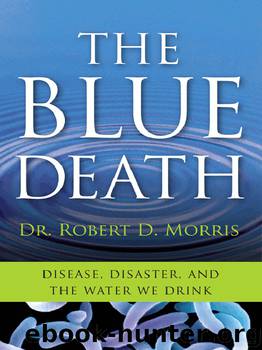The Blue Death by Dr. Robert D. Morris

Author:Dr. Robert D. Morris
Language: eng
Format: epub
Publisher: HarperCollins
For most of Chicago, the remarkable reversal of the Chicago River carried off the problems that had faced its water supply. Rates of waterborne diseases dropped dramatically. But for one large segment of its population, the problems got worse.
The reversal had failed to flush out Bubbly Creek. Instead it turned the small fork of the Chicago River into a nightmarish backwater. For people living close to the creek, this meant enduring a terrific stench. For livestock at Union Stockyards, which relied on the creek both as a repository for waste and a source of water, this meant endless waves of disease. The fact that this translated into huge financial losses and threatened the viability of the yards brought George Johnson to Bubbly Creek.
Johnson was a consulting engineer and the owners of the stockyard charged him with the task of providing safe water for the livestock. Cost was, without question, an issue. Using the Chicago River would require a long pipeline, and Chicago’s sewers, which had once been downstream, were now upstream from the yards. Lake Michigan was simply too far away. That left Bubbly Creek as the only available water supply, but it was profoundly polluted. To purify enough water to supply the vast transient herds was far too costly. No conventional option seemed feasible.
Johnson took a radical new approach. Rather than filtering the water, he would disinfect it with chlorine. Chlorine had been tested in a few small plants and had been applied to sewage as a disinfectant, but it had never been used to treat water on this scale. As Johnson supervised the construction of the plant, he got a call from Jersey City. The beleaguered contractor for the Jersey City Reservoir had heard about his project. If Johnson’s system was good enough for cows and pigs in Chicago, he wondered, why wouldn’t if work for the people of New Jersey?
By the summer of 1908, Johnson had built a treatment plant near the outlet of the Jersey City Reservoir unlike any other plant in the country. Inside three tanks, each the size of a small swimming pool, contained 10,500 gallons of a substance then referred to as chloride of lime, the same white substance that the General Board of Health had encouraged communities to spread along the streets of London fifty years earlier to slow the spread of cholera. The contractor turned on the plant and returned to Mayor Fagan, demanding that he be paid.
Jersey City sued, insisting that the contractor was obligated to provide water free from the upstream sewage. The contractor insisted he only needed to supply safe water and had done so. In the end the courts agreed. In December 1908 the New York Times acknowledged what would prove to be one of the most important public health interventions of the twentieth century with four short paragraphs on its back page. Sandwiched in between articles about a threatened boycott of automobiles built in New Jersey and the appointment of a fourth member to the New
Download
This site does not store any files on its server. We only index and link to content provided by other sites. Please contact the content providers to delete copyright contents if any and email us, we'll remove relevant links or contents immediately.
When Breath Becomes Air by Paul Kalanithi(7297)
Why We Sleep: Unlocking the Power of Sleep and Dreams by Matthew Walker(5682)
Paper Towns by Green John(4193)
The Immortal Life of Henrietta Lacks by Rebecca Skloot(3845)
The Sports Rules Book by Human Kinetics(3616)
Dynamic Alignment Through Imagery by Eric Franklin(3512)
ACSM's Complete Guide to Fitness & Health by ACSM(3483)
Kaplan MCAT Organic Chemistry Review: Created for MCAT 2015 (Kaplan Test Prep) by Kaplan(3440)
Introduction to Kinesiology by Shirl J. Hoffman(3318)
Livewired by David Eagleman(3159)
The River of Consciousness by Oliver Sacks(3010)
Alchemy and Alchemists by C. J. S. Thompson(2925)
The Death of the Heart by Elizabeth Bowen(2923)
Descartes' Error by Antonio Damasio(2759)
Bad Pharma by Ben Goldacre(2746)
The Gene: An Intimate History by Siddhartha Mukherjee(2512)
Kaplan MCAT Behavioral Sciences Review: Created for MCAT 2015 (Kaplan Test Prep) by Kaplan(2501)
The Fate of Rome: Climate, Disease, and the End of an Empire (The Princeton History of the Ancient World) by Kyle Harper(2454)
The Emperor of All Maladies: A Biography of Cancer by Siddhartha Mukherjee(2447)
